Use of Medium-Length Catheters in Clinical Anesthesia for Infusion
Xu Yan¹, Qu Yanxin²
¹Nursing Department, Operating Room, Traditional Chinese Medicine Hospital of Tongzhou District, Nantong City, Jiangsu Province, Nantong 226300, China;
²Anesthesiology Department, Traditional Chinese Medicine Hospital of Tongzhou District, Nantong City, Jiangsu Province, Nantong 226300, China
[Abstract]
Objective: To investigate the feasibility and value of using medium-length catheters in clinical anesthesia for infusion.
Methods: A total of 40 patients with acute cholecystitis undergoing open cholecystectomy at the Anesthesia Surgery Center of the Traditional Chinese Medicine Hospital of Tongzhou District, Nantong, Jiangsu Province, between January 2020 and November 2021 were selected. Patients were randomly divided into two groups (Group A and Group B) using the random number table method, with 20 cases in each group. Group A received ultrasound-guided placement of medium-length catheters for intravenous infusion, while Group B received routine placement of peripheral short intravenous catheters. The two groups were compared in terms of puncture success rate, average catheter replacement time, and catheter-related complications.
Results: The puncture success rate in Group A before anesthesia was significantly higher than in Group B (P<0.05). The average catheter replacement time in Group A post-surgery was significantly longer than in Group B (P<0.05). During catheter indwelling, the total incidence of catheter-related complications in Group A was significantly lower than in Group B (P<0.05).
Conclusion: The use of ultrasound-guided medium-length catheter placement as an infusion tool in clinical anesthesia is safe, feasible, and associated with fewer complications. This approach warrants further research and application.
[Keywords] Medium-length catheter; anesthesia; intravenous infusion; clinical application
[Classification Code] R614.2
[Document Identification Code] A
[Article Number] 1674-4721(2022)7(b)-0070-04
.png)
Establishing Intravenous Access in Clinical Anesthesia: A Comparative Study of Medium-Length Catheters
In clinical anesthesia practice, the ability to rapidly establish intravenous access is a fundamental skill for anesthesiologists and nursing staff. Central venous catheters (CVCs) and peripheral intravenous cannulas (PIVCs) are the most commonly used vascular access devices during the perioperative period. PIVCs inserted preoperatively often have a short indwelling duration and typically require replacement within 72 hours per infection control and nursing care standards [1-2]. For patients with difficult venous access or postoperative hospital stays exceeding 72 hours, repeated attempts at cannulation and the use of multiple PIVCs are often necessary, leading to increased patient discomfort, higher nursing workloads, and rising medical costs [3].
CVCs have specific indications and potential complications, with an overall complication rate of up to 15% during the indwelling period [4]. When the indwelling time exceeds seven days, the incidence of catheter-related bloodstream infections (CRBSIs) increases significantly. Therefore, clinical guidelines recommend planned removal of CVCs as early as possible unless absolutely necessary [5].
For perioperative patients who experience peripheral venous cannulation difficulties but have no indications for central venous access, identifying an optimal intravenous access device to meet the needs of perioperative intravenous therapy is a topic of interest in modern clinical anesthesia. This study focuses on 40 surgical anesthesia patients from the Anesthesia Surgery Center of the Traditional Chinese Medicine Hospital of Tongzhou District, Nantong, Jiangsu Province, and evaluates the use of medium-length catheters for intravenous infusion during the anesthesia period based on individualized patient needs. Promising outcomes were achieved.
1 Materials and Methods
1.1 General Information
A total of 40 patients undergoing open cholecystectomy for acute cholecystitis at the Anesthesia Surgery Center of the Traditional Chinese Medicine Hospital of Tongzhou District, Nantong, Jiangsu Province, from January 2020 to November 2021 were selected. There were 17 male and 23 female patients, aged 22–80 years, with a body weight of 50–90 kg and a height of 153–182 cm. All patients were classified as ASA I–II by the American Society of Anesthesiologists (ASA) [6], and general anesthesia was used in all cases.
Inclusion criteria:
- Superficial veins of the arm were not visible or accessible, classified as grade II–III [7-8].
- Expected duration of postoperative infusion therapy >72 hours.
- Normal coagulation function and no severe organ dysfunction.
Exclusion criteria:
- History of breast surgery.
- Local infection or skin disease at the puncture site on the arm.
- History of severe allergic reactions.
The patients were randomly divided into two groups (Group A and Group B) using the random number table method, with 20 cases in each group. There were no statistically significant differences in baseline characteristics between the two groups (P>0.05), making them comparable (Table 1).
This study was approved by the hospital's ethics committee, and informed consent was obtained from all participants.
.png)
1.2 Methods
1.2.1 Materials
Medium-length catheters typically range from 8 to 20 cm in length and can be classified into midline catheters (15–20 cm) and mini midline catheters (8–12 cm). The mini midline catheter features an integrated design of needle, guidewire, and catheter, making it simple to use, quick to insert, and highly accurate. These qualities make it more suitable for rapid puncture and catheterization in the operating room compared to midline catheters.
In this study, Group A used mini midline catheters (manufactured by Guangdong Haolang Medical Technology Co., Ltd.) as intravenous indwelling tools. Group B used standard 20G open-ended short peripheral intravenous cannulas (manufactured by B. Braun Melsungen AG) as intravenous infusion tools. If catheter replacement was required postoperatively, both groups used Y-shaped closed short peripheral intravenous cannulas (24G, manufactured by Shandong Xinhua Ande Medical Products Co., Ltd.).
1.2.2 Study Methods
Peripheral venous puncture and catheterization for both groups were performed by medical staff with over three years of relevant experience.
Group A: Under ultrasound guidance, medium-length catheters were inserted. The patient’s arm on the puncture side was abducted 90 degrees. A portable color Doppler ultrasound device was used to assess the vascular condition of the upper arm. The puncture site was selected using the zone puncture method (ZIM) [9-10], with the ideal puncture area located in the middle one-third of the upper arm (green zone). After identifying the puncture point, a suitable blood vessel and catheter size were selected. Following disinfection and sterile draping, the mini midline catheter was inserted under ultrasound guidance using the short-axis, out-of-plane dynamic needle-tip guidance method. Strict aseptic techniques were followed throughout the procedure, with adherence to maximum sterile barrier requirements. The catheter tip was placed in the axilla but did not extend beyond the axillary vein. After placement, the catheter was securely fixed, and relevant records were completed.
Group B: Standard 20G open-ended short peripheral intravenous cannulas were used. After applying a tourniquet, a suitable vein was identified, disinfected, and punctured for catheter insertion.
Both groups underwent surgery with intravenous-inhalation combined general anesthesia. Common anesthetics and analgesics were used, including:
- Propofol Injection (Jiangsu Yangtze River Pharmaceutical Group, Batch No. 2105063): Continuous infusion of 4–6 mg/kg/h after induction.
- Citrate Fentanyl Injection (Sinopharm Group Industrial Co., Ltd., Batch No. 20200807).
- Cisatracurium Besylate Injection (Jiangsu Hengrui Medicine Co., Ltd., Batch No. 211130BL).
- Flurbiprofen Axetil Injection (Wuhan Daan Pharmaceutical Co., Ltd., Batch No. 52106293-1).
If vasopressor support was required, intermittent injections of norepinephrine bitartrate (Beijing Yongkang Pharmaceutical Co., Ltd., Batch No. 211000832) or phenylephrine injection (Shanghai Hefeng Pharmaceutical Co., Ltd., Batch No. 07191203) were administered.
Postoperatively, intravenous infusion was initiated, and drugs for both groups were administered within the compatibility range of peripheral intravenous catheters. Medications outside this range were delivered through other suitable routes. In Group A, 16 patients used postoperative intravenous analgesia pumps, while 18 patients in Group B used intravenous analgesia pumps. The baseline infusion rate for all analgesia pumps was ≥2 ml/h to prevent catheter blockage.
1.3 Observation Indicators
Catheter Placement: The puncture and catheterization process for both groups were observed, and the following were compared:
Pre-anesthesia catheter placement success rate (calculated as the number of successful punctures/total cases × 100%; failure was defined as unsuccessful placement after two consecutive attempts).
Postoperative average catheter replacement time.
Catheter-Related Complications: During anesthesia and postoperative periods, the following were observed:
Catheter patency.
Catheter-related complications, including leakage, phlebitis, thrombosis, localized swelling, infection, and catheter blockage.
Total complication rate (calculated as the number of complication cases/total cases × 100%).
1.4 Statistical Methods
Statistical analysis was conducted using SPSS 22.0 software.
- Measurement data were expressed as mean ± standard deviation (x ± s) and compared between groups using the t-test.
- Categorical data were expressed as rates and compared between groups using the χ² test.
- Statistical significance was set at P < 0.05.
2 Results
2.1 Comparison of Catheter Placement, Success Rate, and Replacement Time
Before anesthesia, 17 patients in Group A achieved successful puncture on the first attempt, while 3 patients required a second attempt. No arterial or nerve injuries occurred during the procedure. Among these patients:
- 16 cases used 5Fr catheters, and 4 cases used 4Fr catheters.
- The catheter-to-vein diameter ratio was ≤50% in all cases.
- Catheters were placed in the basilic vein in 15 cases, the brachial vein in 3 cases, and the cephalic vein in 2 cases.
- The target vessel depth from the skin was 0.6–1.5 cm.
All medium-length catheters in Group A remained in place until the end of inpatient infusion therapy, without requiring replacement.
In Group B:
- 8 patients experienced failed puncture attempts (>2 attempts), while 12 patients achieved successful puncture (10 on the first attempt).
- 13 catheters were placed in superficial veins near the wrist, 5 in forearm median veins near the elbow, and 2 in great saphenous veins near the ankle.
- The postoperative catheter replacement interval was 3–5 days.
The catheter placement success rate before anesthesia was significantly higher in Group A compared to Group B (P < 0.05). Postoperative catheter replacement time was significantly longer in Group A than in Group B (P < 0.05) (Table 2).
.png)
2.2 Observation of Catheter Patency During Anesthesia and Comparison of Total Incidence of Catheter-Related Complications
During anesthesia, intravenous catheter infusion was generally smooth in both groups.
- Group A: After infusion rates were set, the drip rate remained stable and consistent.
- Group B: Due to some catheters being placed near joint areas, minor catheter movement during surgery caused noticeable changes in infusion drip rates. This required close observation and adjustments during anesthesia.
Throughout the indwelling period:
- No cases of thrombosis or infection were observed in either group.
- The total incidence of catheter-related complications was significantly lower in Group A compared to Group B (P < 0.05) (Table 3).
.png)
3. Discussion
Midline catheters are an emerging tool for peripheral intravenous infusion, with lengths ranging from 8–20 cm. They are inserted via the basilic vein, cephalic vein, or brachial vein of the upper arm, with the catheter tip positioned at the axillary level or below the shoulder, not exceeding the distal axillary vein [11-12]. These catheters are suitable for infusion therapy lasting 1–4 weeks. As a peripheral venous catheter, midline catheters do not enter the central venous system, eliminating the need for X-ray tip positioning and simplifying the procedure.
Compared with peripheral short intravenous catheters, midline catheters offer a longer dwell time and, compared with central venous catheters, they are associated with a lower incidence of catheter-related complications [13]. Studies suggest that midline catheters may serve as a first-line choice for patients with difficult venous access or those with expected hospitalization durations exceeding 48 hours [4]. In recent years, with improvements in catheter materials and advancements in guided puncture techniques, the utilization of midline catheters has been gradually increasing [14]. However, there are limited reports on the application of midline catheters as infusion devices during surgical anesthesia in China, and relevant guidelines are lacking [15].
This study utilized ultrasound-guided visualization techniques to place mini-midline catheters as infusion tools in 20 patients with poor peripheral venous conditions and prolonged postoperative infusion requirements, yielding favorable results. Compared with the conventional short peripheral catheter group, Group A exhibited a significantly higher puncture success rate before anesthesia (P < 0.05) and a significantly longer catheter replacement time postoperatively (P < 0.05). The total incidence of catheter-related complications during the indwelling period was also significantly lower in Group A than in Group B (P < 0.05).
The favorable outcomes can be attributed to the use of ultrasound visualization technology and standardized catheter placement protocols. This study demonstrates that midline catheters, as a type of peripheral intravenous catheter, should not extend beyond the axillary vein. Furthermore, extending the catheter tip into higher positions to expand infusion options is not recommended. Infusion types should strictly adhere to the catheter's indicated scope, avoiding off-label use. With a flow rate capacity of 40–70 mL/min for 4Fr or 5Fr midline catheters, they can generally meet the rapid fluid replacement requirements during surgery. Due to their relatively stable indwelling position, infusion rates remain consistent during surgery.
The mini-midline catheter, with its simple structure, is more suitable than standard midline catheters for rapid puncture and placement in the operating room. It should be considered as a priority option.
Regarding catheter size selection, the risk of catheter-related complications is closely associated with the ratio of the catheter diameter to the vein diameter (catheter-to-vein ratio). The optimal catheter-to-vein ratio should be less than 45%; exceeding this ratio increases the risk of catheter-related thrombosis by 13 times [16-17]. Therefore, it is advisable to select a catheter that meets clinical infusion needs while maintaining a ratio below the optimal threshold [18-19].
For target vein selection, the success rate of ultrasound-guided peripheral venous puncture is significantly influenced by the vein diameter and depth. Studies have shown that when the target vein diameter is less than 3 mm or the puncture depth exceeds 1.6 cm, the single-attempt success rate significantly decreases. It is recommended to prioritize target veins less than 1.6 cm from the skin surface to improve puncture success rates [20].
The findings of this study further emphasize that proficient use of ultrasound visualization technology, combined with rational catheter and vein selection, can effectively improve puncture success rates and reduce complication rates.
Currently, the use of midline catheters in clinical anesthesia infusion is not yet widespread. Given the small sample size of this study, further research with larger sample sizes and high-quality comparative studies is needed to maximize the advantages of midline catheters, improve placement success rates, and reduce complication rates.
In conclusion, midline catheters bridge the gap between short peripheral intravenous catheters and central venous catheters, offering a new perspective for anesthesiologists and perioperative medical teams to participate in medical decision-making. The choice of whether to place midline catheters alone or in combination with other devices during clinical anesthesia should be based on the catheter's indications and the overall clinical treatment needs. For patients with difficult peripheral venous access but without indications for central venous access, the use of ultrasound-guided midline catheters as infusion tools during anesthesia is safe, feasible, and associated with fewer complications, warranting further research and application.
References
- Bureau of Medical Administration, National Health Commission of the People’s Republic of China. Guidelines for the Prevention and Control of Catheter-Related Infections (2021 Edition) [J]. Chinese Journal of Infection Control, 2021, 20(4): 387-388.
- National Health and Family Planning Commission. Operational Standards for Intravenous Therapy Nursing Techniques [J]. Chinese Nursing Management, 2014, 14(1): 1-3.
- Dong Fangfang, Yang Qiaofang, Bai Shan. Research Progress in the Clinical Application of Midline Catheters [J]. Nursing Practice and Research, 2018, 15(12): 32-34.
- Wang Dongrui, Lin Mei, Wang Jing. Current Application Status of Midline Catheters in Adult Intravenous Therapy [J]. Tianjin Nursing, 2019, 27(1): 122-125.
- Expert Group on the Safe Management of Central Venous Access Devices. Consensus on the Safe Management of Central Venous Access Devices (2019 Edition) [J]. Chinese Journal of Surgery, 2020, 58(4): 261-272.
- Liu Xinyu, Peng Lihua, Zeng Liyi. The Role of ASA Score and Surgical Time in the Risk Assessment of Surgical Site Infections in Colorectal Cancer Patients [J]. Chinese Journal of Infection Control, 2021, 20(12): 1144-1148.
- Li Jianing, Bai Jinzhi, Zhang Ling. Superficial Vein Rating and Quality Management of Intravenous Infusion Puncture [J]. Journal of Nursing Science of Southern China, 2001, 8(6): 56-57.
- Wang Xueqiu, Jin Hongying. Application of Superficial Vein Rating in Preventing Extravasation of Contrast Agents During High-Pressure Injection [J]. Electronic Journal of Integrated Traditional and Western Medicine on Cardiovascular Disease, 2020, 8(11): 9-11.
- Wang Mengmeng, Li Ping, Jia Lingzhi. Application Effects of Two Body Positions in Ultrasound-Guided PICC Placement in ZIM Area [J]. Journal of Binzhou Medical University, 2021, 44(2): 141-144.
- Wen Qilian, Li Ting, Li Weizhen, et al. Application Effect of Regional Puncture Method Combined with WeChat Platform Management in PICC Placement of Cancer Patients [J]. China Contemporary Medicine, 2021, 28(20): 236-238.
- Sharp R, Esterman A, McCutcheon H, et al. The Safety and Efficacy of Midlines Compared to Peripherally Inserted Central Catheters for Adult Cystic Fibrosis Patients: A Retrospective, Observational Study [J]. International Journal of Nursing Studies, 2014, 51(5): 694-702.
- Wang Haibo, Wang Xueying, He Yonghui, et al. Research Progress on Common Complications and Nursing Interventions of Midline Catheters [J]. Evidence-Based Nursing, 2019, 5(2): 132-136.
- Hu Mingming, Shen Xiaofang, Gu Ping. Research and Insights on the Application of Midline Catheters Abroad [J]. Journal of Nursing, 2015, 22(12): 33-35.
- Lu Huapeng, Li Qianyang, Qin Ling, et al. Visual Analysis of Research Literature on Midline Catheters in Intravenous Therapy [J]. Youjiang Medical Journal, 2021, 49(2): 92-96.
- Bai Yajuan, Zhang Xiaoyu. Analysis of the Application Status of Midline Catheters in China Based on Bibliometric Methods [J]. Henan Medical Research, 2020, 29(33): 6183-6185.
- Sharp R, Cummings M, Fielder A, et al. The Catheter-to-Vein Ratio and Rates of Symptomatic Venous Thromboembolism in Patients with a Peripherally Inserted Central Catheter (PICC): A Prospective Cohort Study [J]. International Journal of Nursing Studies, 2015, 52(3): 677-685.
- Infusion Nurses Society. Infusion Nursing Standards of Practice [J]. Journal of Infusion Nursing, 2006, 29(1 Suppl): S1-S92.
- International Society for Vascular Surgery China Branch, Chinese Society of Geriatrics Peripheral Vascular Disease Management Branch. Chinese Expert Consensus on the Prevention and Treatment of Infusion Catheter-Related Venous Thrombosis (2020 Edition) [J]. Chinese Journal of Practical Surgery, 2020, 40(4): 377-383.
- Zhang Jiale, Jiang Ting, Ma Yingchun, et al. The Value of Selecting Suitable Catheter-to-Vein Ratios to Prevent Upper Limb Deep Vein Thrombosis in ICU Patients with Peripherally Inserted Central Catheters [J]. Chinese Journal of Integrated Traditional and Western Medicine in Intensive and Critical Care, 2017, 24(4): 369-373.
- Panebianco NL, Fredette JM, Szyld D, et al. What You See (Sonographically) is What You Get: Vein and Patient Characteristics Associated with Successful Ultrasound-Guided Peripheral Intravenous Placement in Patients with Difficult Access [J]. Academic Emergency Medicine, 2009, 16(12): 1298-1303.

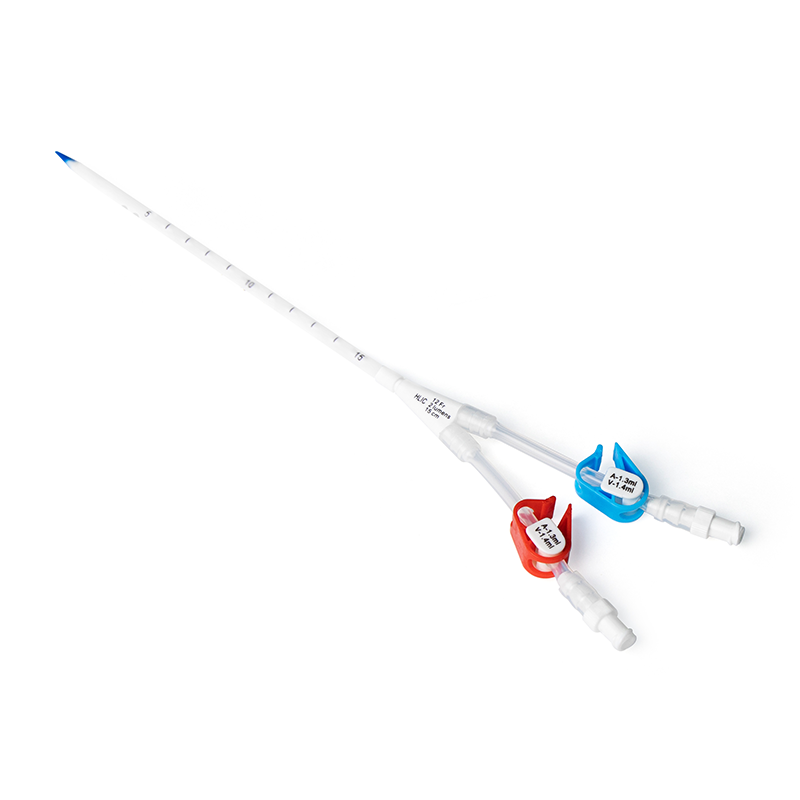
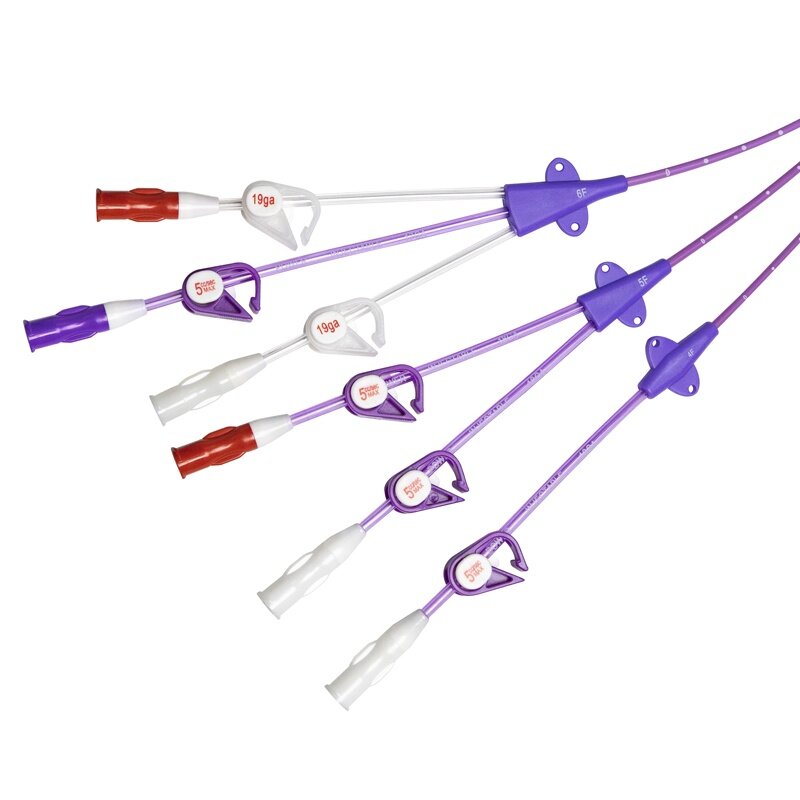
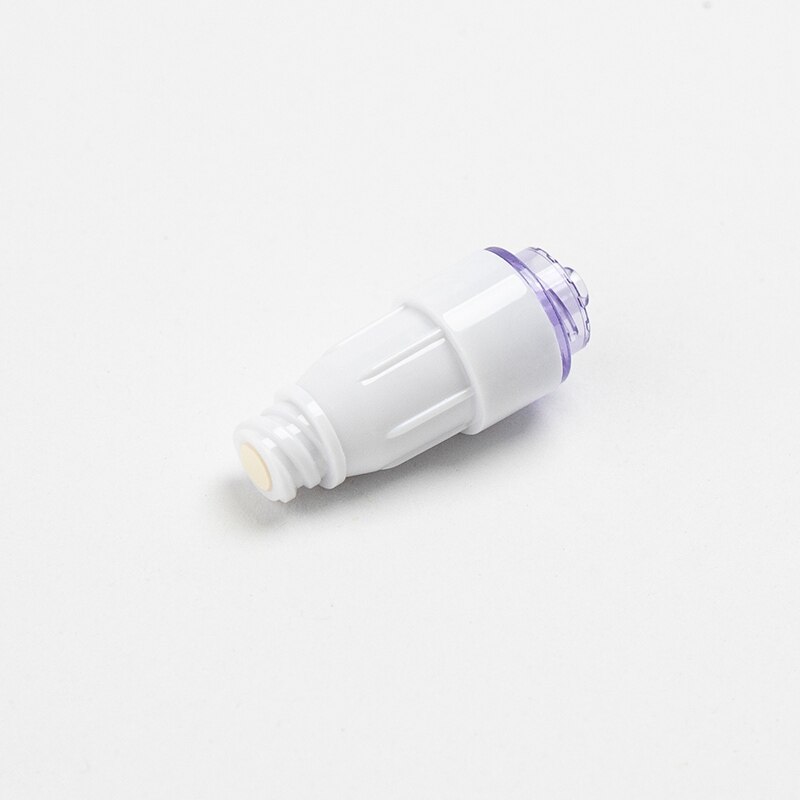
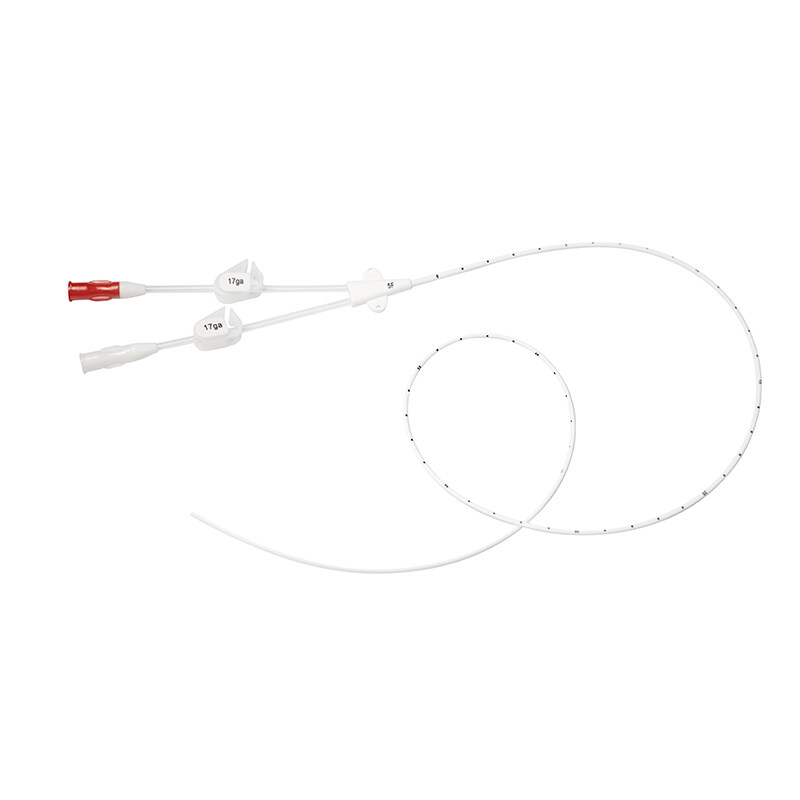
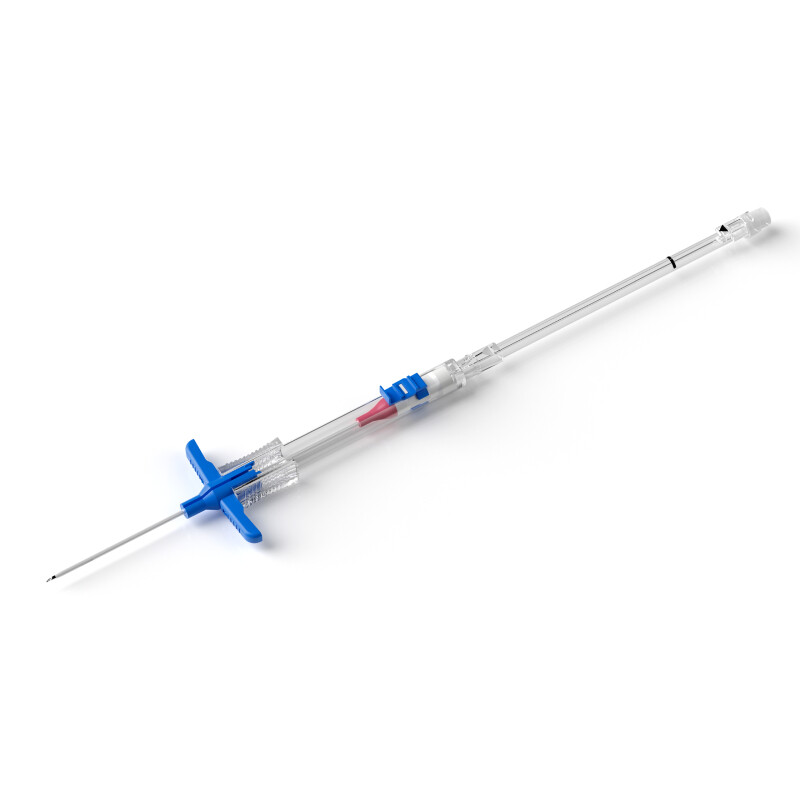
.png)
.png)
.png)
.png)